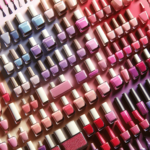Tea tree oil has gained popularity as a natural remedy for acne due to its antimicrobial and anti-inflammatory properties. If you’re wondering how to effectively incorporate this potent essential oil into your skincare routine, look no further. In this article, we’ll guide you on the best ways to use tea tree oil to banish pesky pimples and achieve clearer, healthier skin. From simple spot treatments to DIY face masks, you’ll find a range of easy and effective methods to harness the power of tea tree oil for acne treatment. Say goodbye to blemishes and hello to a radiant complexion!
Understanding Tea Tree Oil
Tea tree oil is a natural essential oil extracted from the leaves of the Melaleuca alternifolia plant, native to Australia. It is known for its potent antimicrobial properties and has been used for centuries for various medicinal purposes. When it comes to acne treatment, tea tree oil can be a game-changer due to its ability to combat bacteria and reduce inflammation.
What is tea tree oil?
Tea tree oil, also known as melaleuca oil, is derived from the distillation of the leaves of the tea tree plant. It contains numerous compounds, including terpinen-4-ol, which play a significant role in its antibacterial and anti-inflammatory properties. This essential oil has gained popularity in recent years for its effectiveness in treating acne and other skin conditions.
How does tea tree oil help with acne?
Tea tree oil’s antimicrobial properties help combat the bacteria responsible for acne breakouts, such as Propionibacterium acnes. By effectively eliminating these bacteria, it can help reduce the intensity and frequency of acne breakouts. Additionally, tea tree oil possesses anti-inflammatory properties, which can help alleviate redness and swelling associated with pimples.
Is tea tree oil safe for acne treatment?
When used correctly, tea tree oil is generally safe for acne treatment. However, it is essential to dilute it properly to avoid skin irritation. Undiluted tea tree oil can be too potent for the skin and may cause redness, dryness, or even a burning sensation. Therefore, it is crucial to follow the recommended guidelines and consult a dermatologist if you have any concerns.
Choosing and Purchasing Tea Tree Oil
Selecting a high-quality tea tree oil
To ensure you are using a high-quality tea tree oil, look for products that are 100% pure essential oil derived from the Melaleuca alternifolia plant. Avoid products that contain additives or fillers, as they may dilute the potency and effectiveness of the oil. Additionally, consider choosing organic tea tree oil to minimize exposure to pesticides and chemicals.
Where to buy tea tree oil
Tea tree oil can be purchased at various health food stores, online retailers, and even some local pharmacies. When buying tea tree oil, it is essential to choose reputable brands known for their quality. Reading customer reviews and checking for third-party lab testing can also help ensure that you are purchasing a reliable product.
Preparing Tea Tree Oil for Acne Treatment
Diluting tea tree oil
The key to using tea tree oil safely and effectively is dilution. Pure tea tree oil can be too strong for direct application to the skin, so it is crucial to dilute it with a suitable carrier oil. A general rule of thumb is to mix one part tea tree oil with nine parts carrier oil, such as jojoba oil or coconut oil. This dilution ratio helps minimize the risk of skin irritation while still retaining the beneficial properties of tea tree oil.
Choosing a suitable carrier oil
When choosing a carrier oil, consider your skin type and personal preferences. Some popular choices include jojoba oil, coconut oil, almond oil, or grapeseed oil. These carrier oils are easily absorbed by the skin and do not clog pores, making them optimal for acne-prone skin. It is important to note that individuals with oily or acne-prone skin may want to opt for lighter carrier oils to avoid exacerbating their skin condition.
Cleansing the Skin
Washing your face with a gentle cleanser
Before applying any acne treatments, it is crucial to start with clean skin. Use a gentle cleanser to remove dirt, oil, and makeup from your face. Look for a cleanser specifically formulated for acne-prone skin, as these products often contain ingredients that can help control oil production and prevent clogged pores. Avoid harsh cleansers or soaps that can strip the skin of its natural oils and disrupt its balance.
Avoiding harsh soaps and cleansers
While it may be tempting to use harsh soaps or cleansers in hopes of eliminating acne, these products can actually do more harm than good. Harsh cleansers can strip the skin of its natural oils, leading to dryness and irritation. This, in turn, can trigger an overproduction of sebum and worsen acne breakouts. Opt for gentle cleansers that cleanse the skin without causing excessive dryness or irritation.
Applying Tea Tree Oil
Spot treatment for individual pimples
Tea tree oil can be applied as a spot treatment for individual pimples. After diluting the tea tree oil with a carrier oil, take a cotton swab or a clean fingertip and apply a small amount of the mixture directly onto the pimple. Allow it to dry before applying any other skincare products or makeup. Remember to use the diluted tea tree oil sparingly, as applying too much can potentially irritate the skin.
Using tea tree oil as a toner
Tea tree oil can also be used as a toner to help prevent new acne breakouts. Mix a few drops of diluted tea tree oil with water or a gentle facial toner. Apply the mixture to a cotton pad and gently sweep it across your face, focusing on areas prone to breakouts. Using tea tree oil as a toner can help remove any residual dirt or oil, promoting clearer and healthier-looking skin.
Creating a tea tree oil face mask
For a more intensive treatment, you can create a face mask using tea tree oil. Mix a few drops of diluted tea tree oil with a natural clay or bentonite clay powder to form a paste. Apply the mask evenly to your face, avoiding the eye and lip area. Leave it on for about 10-15 minutes, or until it starts to dry. Rinse off the mask with warm water and gently pat your face dry. This face mask can help draw out impurities, reduce oiliness, and improve overall skin condition.
Potential Side Effects and Precautions
Performing a patch test
Before using tea tree oil for the first time, it is advisable to perform a patch test to check for any sensitivity or allergic reactions. Apply a small amount of diluted tea tree oil to a small area of skin, such as the inner forearm. Wait 24 hours and observe for any signs of redness, itching, or irritation. If there are no adverse reactions, it is generally safe to use tea tree oil on the face.
Avoiding contact with eyes and sensitive areas
Tea tree oil should never be applied directly to the eyes or any sensitive areas, as it can cause irritation and discomfort. If accidental contact occurs, rinse thoroughly with water and seek medical attention if necessary. When applying tea tree oil near the eye area, exercise caution and ensure that it is adequately diluted to minimize the risk of irritation.
Discontinuing use if irritation occurs
While tea tree oil is generally safe for most individuals, some people may experience skin irritation or allergic reactions. If you notice redness, itching, or any discomfort after using tea tree oil, discontinue its use immediately. Consult a dermatologist if the symptoms persist or worsen.
Incorporating Tea Tree Oil into Skincare Routine
Using tea tree oil in combination with other acne treatments
Tea tree oil can be used in conjunction with other acne treatments to enhance their effectiveness. However, it is important to introduce new products gradually and assess their compatibility with your skin. Avoid using multiple acne treatments simultaneously, as this can lead to excessive dryness and irritation. Consult a dermatologist for personalized advice on integrating tea tree oil into your skincare routine.
Frequency of application
The frequency of tea tree oil application may vary depending on individual skin sensitivity and tolerance. Initially, it is advisable to start with once-a-day application and monitor how your skin responds. If no irritation occurs, you may gradually increase the frequency to twice a day, but always pay attention to your skin’s reaction. Overuse of tea tree oil can cause dryness and irritation, so it is important to find the right balance for your skin.
Monitoring and Assessing Results
Tracking changes in acne severity
To monitor the effectiveness of tea tree oil in treating acne, it is helpful to track the changes in acne severity. Take note of the number of pimples, their size, and how frequently new breakouts occur. Regularly document these observations to identify any patterns or improvements over time.
Noting improvements or lack thereof
It is essential to be patient when using tea tree oil for acne treatment, as noticeable improvements may take time. Monitor your skin closely and make note of any improvements, such as reduced redness, fewer breakouts, or a more balanced complexion. However, if you do not see any improvements or experience worsening of your acne, it may be wise to consult a dermatologist for further guidance.
Tips and Tricks for Maximizing Tea Tree Oil Benefits
Storing tea tree oil properly
To ensure the longevity and effectiveness of your tea tree oil, it is crucial to store it properly. Keep the bottle in a cool, dark place away from direct sunlight and heat sources. Additionally, always seal the bottle tightly after use to prevent oxidation and contamination.
Using tea tree oil for body acne
Tea tree oil is not limited to treating facial acne; it can also be used for body acne. Dilute the tea tree oil with a carrier oil and apply it to affected areas on the body. Remember to perform a patch test first, as the skin on the body may be more sensitive or reactive compared to the face.
Consulting a Dermatologist
Seeking professional guidance
While tea tree oil can be a beneficial addition to your acne treatment routine, it is essential to consult a dermatologist for personalized guidance. A dermatologist can provide an accurate diagnosis of your specific skin condition and recommend the most appropriate treatment plan for you. They can also help determine the ideal concentration and frequency of tea tree oil usage based on your skin’s needs.
When to visit a dermatologist
If your acne does not show improvement or worsens after using tea tree oil or over-the-counter acne treatments, it may be time to visit a dermatologist. They can evaluate your skin, identify any underlying causes or contributing factors, and provide targeted treatment options. Remember, professional guidance is invaluable and can lead to better outcomes in managing your acne.
In conclusion, tea tree oil can be an effective and natural remedy for acne when used correctly. By understanding its properties, choosing high-quality oil, diluting it appropriately, and incorporating it into a skincare routine, you can harness its potential benefits. However, it is crucial to be patient, monitor your skin’s response, and consult a dermatologist if needed. With proper care and usage, tea tree oil can be a valuable tool in your journey towards clearer and healthier skin.




